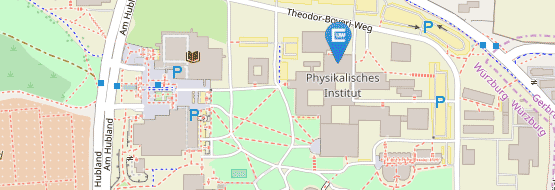B02
Topological superconductivity in HgTe-based topological materials
Summary
The search for topological quantum states in heterostructures of topological materials and conven- tional superconductors has heated up with many controversies emerging about the validity of ob- servations or their correct interpretation. At the core of the problem lies a deep mismatch between simple theoretical concepts and the complex physics that emerges in realistic device implementa- tions. For this reason, we have always been and continue to be focused on a systematic approach to understanding the fundamentals of proximity-induced superconductivity in topological materials to establish a basis upon which to investigate exotic concepts such as Majoranas. This project pursues three principal directions:
Our first focus is the systematic investigation of the spatial, spectral and dynamic properties of Andreev bound states. In the previous funding period, we developed the technology for integrating point contacts as local tunnel probes in HgTe 2DTI devices. We plan to probe the Andreev bound states in the weak link of a HgTe 2DTI Josephson junction. The goal is to explore nonequilibrium transport in the finite voltage state of the junction. Here, the energy range for which experimental sig- natures of a 4π-periodic Josephson effect are observed is of particular interest. Complementary, we propose to map out the phase-dependence of the Andreev bound states using two-tone microwave spectroscopy. Further, we plan to continue our development of nanomagnet technology with the aim of localizing and detecting Andreev bound states close to the superconductor interface. Second, magnetic topological insulators offer an new, exciting opportunity to study the interplay of superconducting correlations and magnetism. Recently, we demonstrated supercurrent transport in magnetically-doped HgTe for the first time and observed an FFLO-like state when an in-plane magnetic field is applied. We aim to extend our investigation to cover topological aspects and different driving mechanisms for the FFLO state, e.g., Zeeman vs. Rashba interaction, or RF excitation. The third topic concerns the detection of propagating Majorana states in superconduc- tor/topological insulator heterostructures. Counterpropagating Majoranas emerge in 3DTI Joseph- son junctions at phase difference φ = π. Recently, they have been predicted to exhibit quantized phase-coherent heat transport. We propose to investigate the basic properties of thermal transport in HgTe 3DTI/superconductor heterostructures using a combination of thermoelectric measurements and Johnson noise thermometry and search for signatures of quantized thermal transport.


